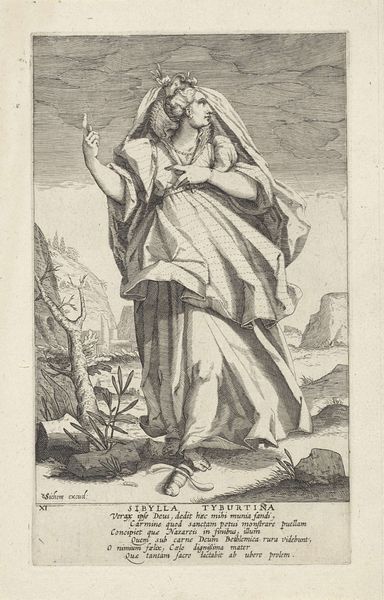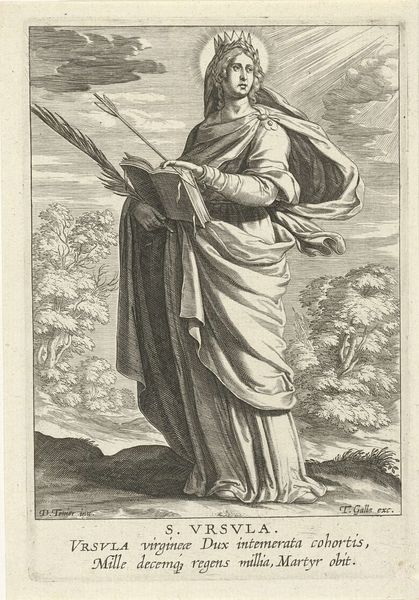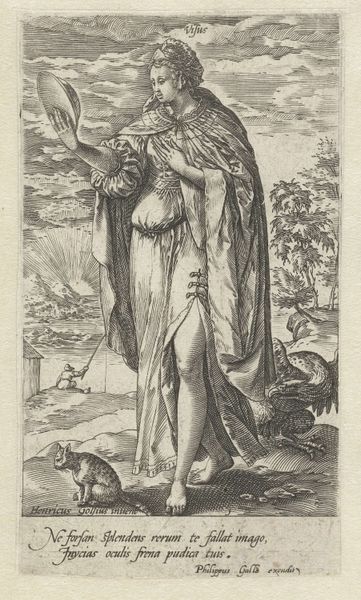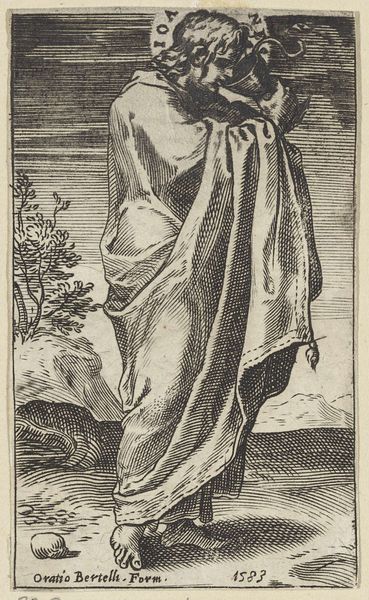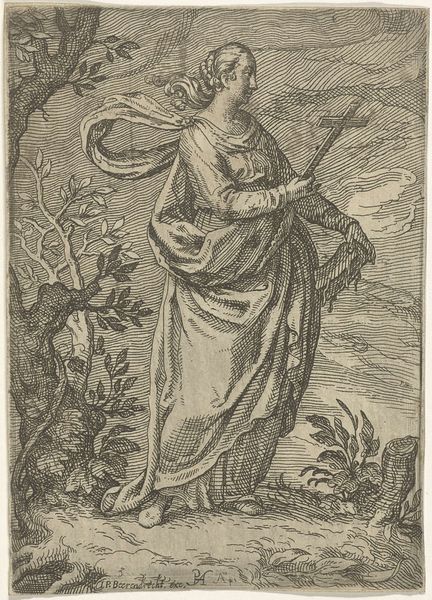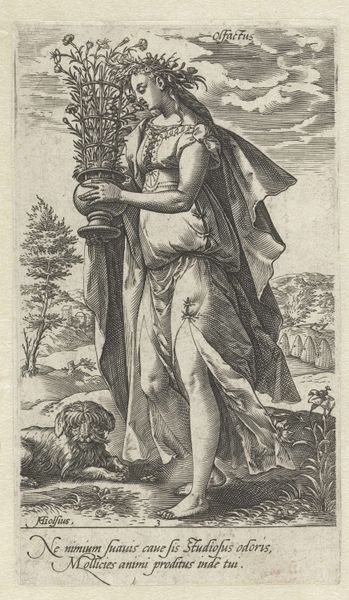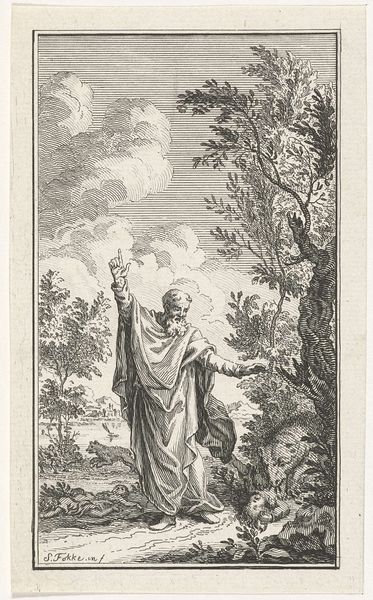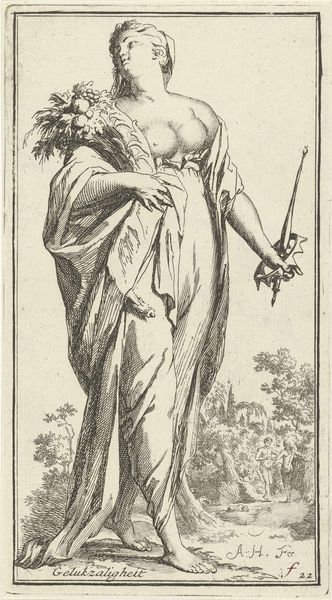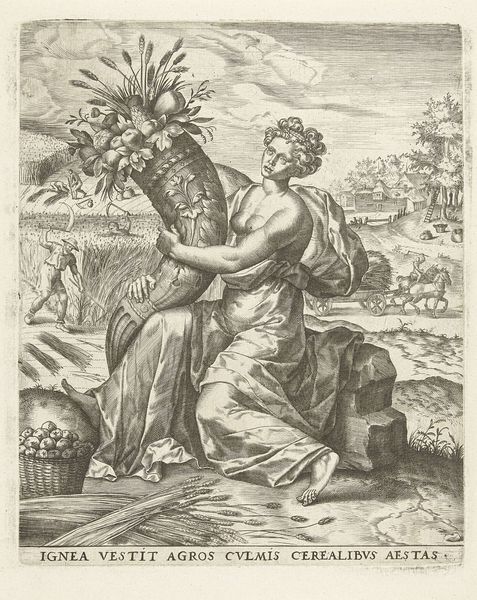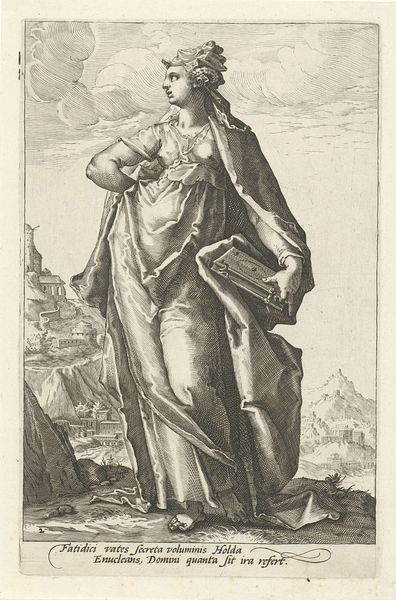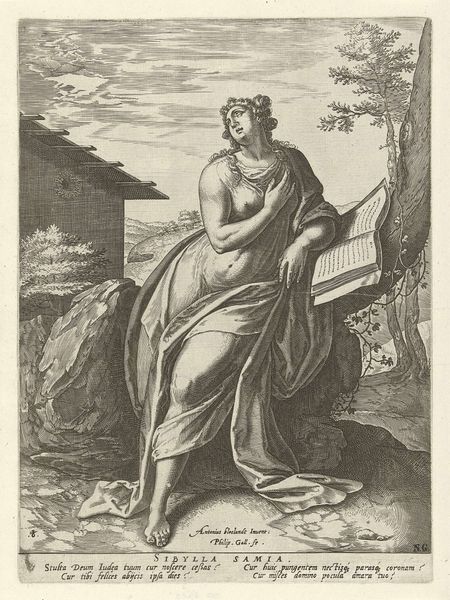
print, engraving
#
portrait
#
baroque
# print
#
history-painting
#
engraving
Dimensions: height 152 mm, width 102 mm
Copyright: Rijks Museum: Open Domain
Editor: This engraving, “Heilige Emerentiana van Rome” by Theodoor Galle, dates back to sometime between 1581 and 1633. What strikes me is the contrast between the peaceful setting and the dramatic life of the saint; her gaze feels distant. What do you see in this piece? Curator: The image pulses with meaning embedded in symbols. Note the stones in her garment - these connect us to the Latin text which translates as "An Ethnic throng strikes her with hard rocks", thus identifying Emmerentiana's martyrdom. The palm frond she holds aloft is also key – an emblem of triumph and eternal life. Think of how these symbols created a sense of cultural memory for viewers then. What do these objects tell us about how people understood sacrifice? Editor: That makes so much sense. So the palm isn’t just decorative; it's actively communicating a specific message? Curator: Exactly. Consider also the halo – a signifier instantly recognizable, linking her to the divine. Ask yourself, how does this shared visual vocabulary help solidify belief systems over time? Religious Iconography operates with codes of signs and objects that tell us how to feel about faith and sacrifice. Editor: I hadn't considered it that way, the visual vocabulary solidifying beliefs. I will think about it next time! Curator: Yes, look for the symbols in everything!
Comments
No comments
Be the first to comment and join the conversation on the ultimate creative platform.
